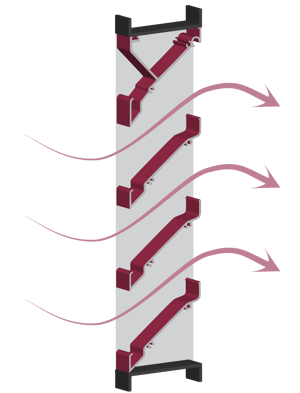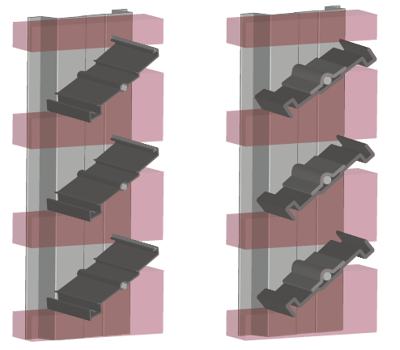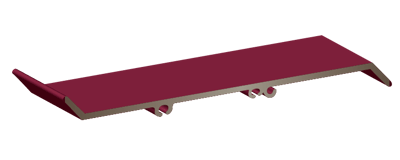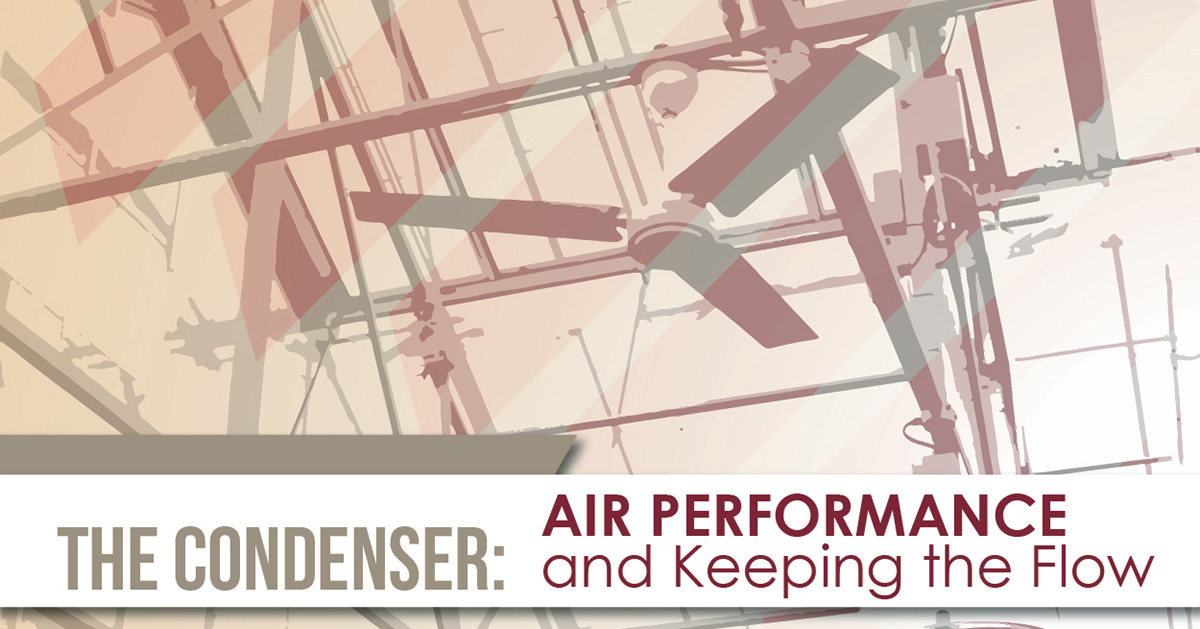Learn the basics of air performance and how louvers and dampers play an important role in your system. The Condenser is quick and easy reads from MCDLG!
What is Air Performance?
We say it a lot, but what does “air performance” mean? For louvers and dampers, air performance refers to the act of air flowing through your HVAC system. The less effort required to pull the air in, the better. This involves passing air through the free space between the louver blades and then through your duct work, which then moves through various control dampers and junction points, on its way to the rooms that need fresh conditioned air.

Louvers cover the intake and exhaust openings of your HVAC system. They make sure your system can pull in fresh air without dragging in other unwanted elements, like rainwater.
Louvers and control dampers are necessary to intake, direct, and control the flow of air, but each louver and damper will add a little more resistance to air flow. Your system fans will need to work hard to maintain the necessary amount of air flow. Air performance is often a balancing act between maintaining the necessary air flow while also meeting various project requirements.
Starting a new project? Contact Arrow United Industries about our line of control dampers. Let's work together to meet your requirements!
Pressure Drop and Free Area
There are two factors to air efficiency when it comes to louvers and dampers: pressure drop and free area.
Pressure drop is the amount of resistance applied to the air stream as it passes through the louver or damper. This affects all types of dampers in HVAC. Excessive pressure drop will cause significant losses in air velocity. You can make up for this loss by increasing the speed of your system fans, which increases energy consumption. That means a higher energy bill for the same amount of air flow. All louvers and dampers will cause pressure drop. The key to good air performance is minimizing pressure drop.

The air stream will lose pressure as it passes through the louver or damper. You can minimize this loss by focusing on air performance.
There are several factors involved in pressure drop when designing an efficient louver or damper, but you have control over two of those factors: free area and the blade profile. Free area is the open space between the blades and between blades and frame members. For dampers and adjustable louvers, free area is calculated with the blades in the full-open position. More free area means more space for air to pass through the louver, which translates to less pressure drop.
Blade profile refers to the features found on the blade. Stationary louvers will often have catches or drain troughs on their blades, to catch rainwater or dirt before it passes into the louver. These features are helpful for protecting ductwork from unwanted debris, but they also create more resistance. A flat blade profile is the best option for minimizing pressure drop.
Finding the Best Solution
Your louvers may need to have those catches in place to protect against severe weather. In these cases, you can choose a severe weather louver with the highest free area to strike a balance between protection and air performance. 
A straight blade profile has few features to catch rainfall, but it also provides the least resistance to air flow. Less air resistance = better air performance!
Always try to strike the right balance and maintain an efficient HVAC system. Choose louvers and dampers built for the task. Don’t go overboard with protection features, like drainable blades, if you don’t need them. Understand where the louver or damper will go and what it will be required to do.
Air performance is important. Efficient HVAC systems require less energy to move air. Less strain on important parts means fewer maintenance calls. You can save energy, time, and money by designing a system for air performance. But remember, you'll need to meet other requirements too. It's a balancing act.
Summary
Here is a quick summary for your reference:
- Air performance refers to the airflow with the least amount of resistance. Better air performance means a more efficient HVAC system. An efficient HVAC system saves building owners energy, time, and money!
- Pressure drop adds resistance to airflow and decreases air velocity. Higher pressure drop requires more power to draw the same amount of air into the system.
- Free area is the free space between blades and between blades and frame. More space means less resistance, and lower pressure drop.
- Blade profiles refer to all the features on a louver or damper blade. These features add resistance to the air stream. A simple blade profile, flat and free of features, will have the least resistance and a lower pressure drop.
- EXTRA POINT: When choosing a damper, consider models with low air leakage. Excess air leakage can make it more difficult to redirect air flow, thus impacting overall air performance. The Air Movement and Control Association (AMCA) have a classification system for conveying air leakage, with Class 1 being the best.
Air performance is important for an efficient HVAC system, but it isn't the only thing to consider. Is the trade-off in performance worth the protection, assuming you've met your requirements? Can you achieve the right balance with the right louver? Share your thoughts in the Comments section. We want to hear from you!
Learn more about control dampers with these Newsstand articles:
Questions? Ask MCDLG. We are here to help! Just use the Contact button below and tell us what you need.

.webp?width=91&height=70&name=MCDLG%20Logo%20(Resize).webp)





